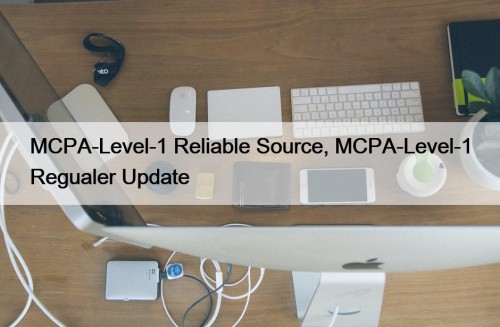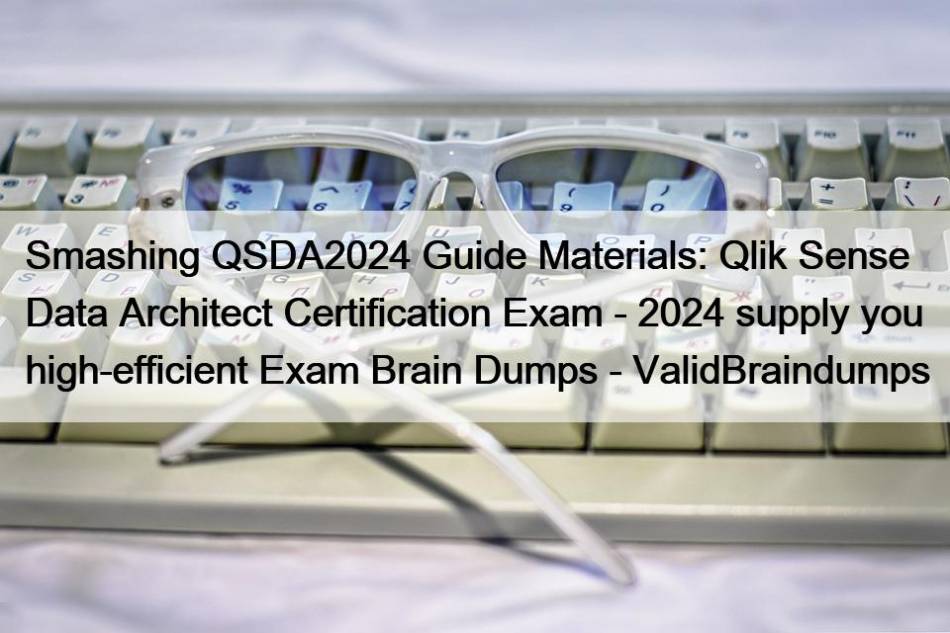Most Popular
 100% Pass Quiz Perfect Nutanix - Reliable NCS-Core Exam Pdf
100% Pass Quiz Perfect Nutanix - Reliable NCS-Core Exam Pdf
P.S. Free 2025 Nutanix NCS-Core dumps are available on Google ...
 MCPA-Level-1 Reliable Source, MCPA-Level-1 Regualer Update
MCPA-Level-1 Reliable Source, MCPA-Level-1 Regualer Update
Our MuleSoft MCPA-Level-1 latest exam preparation is valid. If you ...
 PEGACPSSA88V1 Cert Guide Free PDF | High Pass-Rate Latest PEGACPSSA88V1 Test Prep: Certified Pega Senior System Architect 8.8
PEGACPSSA88V1 Cert Guide Free PDF | High Pass-Rate Latest PEGACPSSA88V1 Test Prep: Certified Pega Senior System Architect 8.8
Therefore, it is indispensable to choose a trusted website for ...



Smashing QSDA2024 Guide Materials: Qlik Sense Data Architect Certification Exam - 2024 supply you high-efficient Exam Brain Dumps - ValidBraindumps

Our experts all have a good command of exam skills to cope with the QSDA2024 preparation materials efficiently in case you have limited time to prepare for it, because all questions within them are professionally co-related with the QSDA2024 exam. Moreover, to write the Up-to-date QSDA2024 Practice Braindumps, they never stop the pace of being better. As long as you buy our QSDA2024 study quiz, you will find that we update it from time to time according to the exam center.
With the advent of knowledge times, we all need some professional certificates such as QSDA2024 to prove ourselves in different working or learning condition. So making right decision of choosing useful practice materials is of vital importance. Here we would like to introduce our QSDA2024 practice materials for you with our heartfelt sincerity. With passing rate more than 98 percent from exam candidates who chose our QSDA2024 study guide, we have full confidence that your QSDA2024 actual test will be a piece of cake by them.
>> QSDA2024 Exam Sample Questions <<
Hot QSDA2024 Exam Sample Questions & Pass for Sure New QSDA2024 Test Forum: Qlik Sense Data Architect Certification Exam - 2024
Practicing under these situations helps to kill Qlik Sense Data Architect Certification Exam - 2024 (QSDA2024) exam anxiety. Questions in desktop-based mock exams are identical to the real ones. Our practice exams give you options to change their durations and questions' numbers to polish your skills. You can easily assess your readiness with the assistance of results produced by the practice exam.
Qlik QSDA2024 Exam Syllabus Topics:
| Topic | Details |
|---|---|
| Topic 1 |
|
| Topic 2 |
|
| Topic 3 |
|
| Topic 4 |
|
| Topic 5 |
|
Qlik Sense Data Architect Certification Exam - 2024 Sample Questions (Q28-Q33):
NEW QUESTION # 28
Exhibit.
Refer to the exhibit.
A data architect wants to transform the input data set to the output data set. Which prefix to the Qlik Sense LOAD command should the data architect use?
- A. Generic
- B. Peek
- C. PivotTable
- D. Hierarchy Be longsTo
Answer: A
Explanation:
In this scenario, the data architect wants to transform the input dataset, which is in a key-value pair structure, into a table where each attribute becomes a column with its corresponding value under the relevant key.
Understanding the Requirement:
* Theinputdata consists of three fields: Key, Attribute, and Value.
* The desiredoutputstructure has the Key as a primary identifier, and the Attributes (like Color, Diameter, Height, etc.) are spread across the columns, with corresponding values filled in each row.
Best Method to Achieve this Transformation:
* The appropriate method to convert key-value pairs into a structured table where each unique attribute becomes a separate column is theGeneric Loadfunction in Qlik Sense.
Why Generic?
* Generic Loadis specifically designed for situations where data is stored in a key-value format (like the one provided) and needs to be converted into a more traditional tabular format, with attributes as columns.
* It creates a separate table for each combination of Key and Attribute, effectively "pivoting" the attribute values into columns in the output table.
How it Works:
* When applying a GENERIC LOAD to the input dataset, Qlik Sense will generate multiple tables, one for each Attribute. However, in the final data model, Qlik Sense automatically joins these tables by the Key field, effectively producing the desired output structure.
References:
* Qlik Sense Documentation on Generic Load: The documentation outlines how to use the Generic Load to handle key-value pairs and pivot them into a more traditional table format.
NEW QUESTION # 29
A data architect needs to upload data from ten different sources, but only if there are any changes after the last reload. When data is updated, a new file is placed into a folder mapped to E:486396169. The data connection points to this folder.
The data architect plans a script which will:
1. Verify that the file exists
2. If the file exists, upload it Otherwise, skip to the next piece of code.
The script will repeat this subroutine for each source. When the script ends, all uploaded files will be removed with a batch procedure. Which option should the data architect use to meet these requirements?
- A. FilePath, IF, THEN, Drop
- B. FilePath, FOR EACH, Peek, Drop
- C. FileExists, FOR EACH, IF
- D. FileSize, IF, THEN, END IF
Answer: C
NEW QUESTION # 30
A data architect inherits an app that takes too long to load and overruns the data load window.
The app pulls all records (new and historical) from three large databases. The reload process puts a heavy load on the source database servers. All of the data is required for analysis.
What should the data architect do?
- A. Implement incremental load on each database using QVD files
- B. Make sure the individual reload tasks in the QMC are not running in parallel
- C. Implement ODAG to split out the app into smaller chunks
- D. Implement Direct Discovery with partial load
Answer: A
Explanation:
The scenario describes an app that is experiencing long load times due to the need to pull all records, both new and historical, from three large databases. This situation puts a strain on both the Qlik environment and the source databases. Given that all data is required for analysis, a full reload each time can be inefficient and resource-intensive.
Implementingincremental loadis a widely recommended approach in such cases. Incremental loading allows you to load only new or changed data since the last reload, rather than reloading all the data every time. This significantly reduces the time and resources required for reloading, as only a subset of the data needs to be processed during each reload. QVD (QlikView Data) files are typically used to store the historical data, while only the new or updated records are fetched from the source databases.
This approach would help:
* Reduce the load on the source databases.
* Shorten the data reload window.
* Maintain historical data efficiently while ensuring that all new data is captured.
NEW QUESTION # 31
Exhibit.
Refer to the exhibit.
A data architect is loading two tables into a data model from a SQL database. These tables are related on key fields CustomerlD and Customer Key.
Which script should the data architect use?
- A.

- B.

- C.

- D.

Answer: D
Explanation:
In the scenario, two tables (OrderDetails and Customers) are being loaded into the Qlik Sense data model, and these tables are related via the fields CustomerID and CustomerKey. The goal is to ensure that the relationship between these two tables is correctly established in Qlik Sense without creating synthetic keys or data inconsistencies.
* Option A:Renaming CustomerKey to CustomerID in the OrderDetails table ensures that the fields will have the same name across both tables, which is necessary to create the relationship. However, renaming is done using AS, which might create an issue if the fields in the original data source have a different meaning.
* Option B and C:These options use AUTONUMBER to convert the CustomerKey and CustomerID to unique numeric values. However, using AUTONUMBER for both fields without ensuring they are aligned correctly might lead to incorrect associations since AUTONUMBER generates unique values based on the order of data loading, and these might not match across tables.
* Option D:This approach loads the tables with their original field names and then uses the RENAME FIELD statement to align the field names (CustomerKey to CustomerID). This ensures that the key fields are correctly aligned across both tables, maintaining their relationship without introducing synthetic keys or mismatches.
NEW QUESTION # 32
Exhibit.
Refer to the exhibit.
The data architect needs to build a model that contains Sales and Budget data for each customer. Some customers have Sales without a Budget, and other customers have a Budget with no Sales.
During loading, the data architect resolves a synthetic key by creating the composite key.
For validation, the data architect creates a table that contains Customer, Month, Sales, and Budget columns.
What will the data architect see when selecting a month?
- A. Customer Names and Sales records for the selected month but with only non-null values in Budget column
- B. Customer Names and Budaets records for the selected month. Sales column can contain null or non-null values
- C. Customer Names and Sales records for the selected month, Budgets column can contain null or non-null values
- D. All Customer Names for both Sales and Budget records for the selected month
Answer: C
Explanation:
In the scenario where the data model is built with a composite key (keyYearMonthCustNo) to resolve synthetic keys, the following outcomes occur:
* Sales and Budget Data Integration:
* The composite key ensures that each combination of Year, Month, and Customer is uniquely represented in the combined Sales and Budget data.
* During data selection (e.g., when a specific month is selected), Qlik Sense will show all the customer names that have either Sales or Budget data associated with that month.
* Resulting Data View:
* For the selected month, customers with sales records will display their Sales data. However, if the corresponding Budget data is missing, the Budget column will contain null values.
* Similarly, if a customer has a Budget but no Sales data for the selected month, the Sales column will show null values.
Validation Outcome:When the data architect selects a month, they will see the following:
* Customer Names and Sales recordsfor the selected month, where the Sales column will have values and the Budget column may contain null or non-null values depending on the data availability.
NEW QUESTION # 33
......
All these QSDA2024 exam dumps formats contain real, updated, and error-free Qlik Sense Data Architect Certification Exam - 2024 (QSDA2024) exam questions that prepare you for the final QSDA2024 exam. To give you an idea about the top features of QSDA2024 Exam Dumps, a free demo download facility is being offered to Qlik Sense Data Architect Certification Exam - 2024 candidates. This free QSDA2024 exam questions demo download facility is available in all three QSDA2024 exam dumps formats.
New QSDA2024 Test Forum: https://www.validbraindumps.com/QSDA2024-exam-prep.html
- QSDA2024 Valid Test Forum 🧨 Valid QSDA2024 Study Materials 🏩 Exam QSDA2024 Cram 🚻 Enter ( www.testsimulate.com ) and search for “ QSDA2024 ” to download for free 🕙Latest QSDA2024 Test Objectives
- Quiz 2025 Qlik High Pass-Rate QSDA2024 Exam Sample Questions 🤽 Search for ▶ QSDA2024 ◀ on 《 www.pdfvce.com 》 immediately to obtain a free download 🎃QSDA2024 Dumps Vce
- Instant QSDA2024 Discount 🤩 QSDA2024 Latest Dumps Sheet 😭 Valid Braindumps QSDA2024 Questions ⬇ Search for “ QSDA2024 ” and download it for free on [ www.examsreviews.com ] website 🔎QSDA2024 Latest Braindumps Pdf
- QSDA2024 Dumps Vce 🏆 Valid QSDA2024 Exam Cram 🤶 Valid QSDA2024 Study Materials 🍢 Open website ⏩ www.pdfvce.com ⏪ and search for 【 QSDA2024 】 for free download 🏥QSDA2024 Valid Test Forum
- Valid QSDA2024 Study Materials 🐌 Valid Dumps QSDA2024 Pdf 🚜 QSDA2024 Latest Braindumps Pdf 💱 Open ➠ www.passtestking.com 🠰 enter ☀ QSDA2024 ️☀️ and obtain a free download 😴Exam QSDA2024 Simulator Free
- Instant QSDA2024 Discount 😴 QSDA2024 Certification Book Torrent 🪐 QSDA2024 Practical Information 🥛 Go to website 【 www.pdfvce.com 】 open and search for 《 QSDA2024 》 to download for free 🟩Exam QSDA2024 Discount
- QSDA2024 Valid Mock Exam 🧾 Exam QSDA2024 Discount 🧱 QSDA2024 Study Tool 🕌 Simply search for ☀ QSDA2024 ️☀️ for free download on ➥ www.examcollectionpass.com 🡄 😱Valid QSDA2024 Exam Cram
- QSDA2024 Valid Test Forum 🆎 QSDA2024 Latest Dumps Sheet 📭 Instant QSDA2024 Discount 🚓 Open website ➤ www.pdfvce.com ⮘ and search for ☀ QSDA2024 ️☀️ for free download 🌴Instant QSDA2024 Discount
- QSDA2024 Valid Mock Exam 👦 QSDA2024 Latest Braindumps Pdf 😰 Instant QSDA2024 Discount ❇ Copy URL “ www.exams4collection.com ” open and search for 「 QSDA2024 」 to download for free ⚡Valid Braindumps QSDA2024 Questions
- Exam QSDA2024 Discount 🍩 QSDA2024 Certification Book Torrent 🤥 QSDA2024 Dumps Vce 😐 Enter ▶ www.pdfvce.com ◀ and search for ( QSDA2024 ) to download for free 😦QSDA2024 Dumps Vce
- Quiz 2025 Qlik High Pass-Rate QSDA2024 Exam Sample Questions 🆚 Download { QSDA2024 } for free by simply searching on ➥ www.prep4pass.com 🡄 🕯Latest QSDA2024 Test Objectives
- QSDA2024 Exam Questions
- yu856.com hker2uk.com 5000n-01.duckart.pro www.hola666.com www.0435.online havin84241.tokka-blog.com 5000n-14.duckart.pro 5000n-03.duckart.pro brockca.com 甘丹天堂.官網.com
Tags: QSDA2024 Exam Sample Questions, New QSDA2024 Test Forum, QSDA2024 Reliable Dumps Free, QSDA2024 Practice Exam Fee, Trustworthy QSDA2024 Pdf